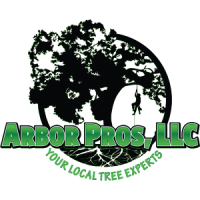An unhealthy tree will display a variety of possible symptoms that indicate problems. Tree health can be a complicated issue, which requires a thorough diagnosis to find the root of the problem. Every clue is important for understanding the overall situation. Here is how we go about examining an unhealthy tree.
- Identify the species of the tree. Insect and tree diseases are often species-specific. Through simple identification, we can cross off multiple possibilities.
- Scan for patterns. If a single tree is the only one showing damage in given area, this is usually a reliable indicator of insects or diseases being present. On the flip side, if the damage is common to all the trees in given area, this is more likely an indication of environmental stress. Poor drainage, lack of water, chemical issues or weather are all examples of environmental stress.
- Construct a timeline. Infectious pathogens and insects that cause issues in trees do not manifest overnight. Understanding the timeline of an unhealthy tree is another significant piece to solving the puzzle.
- Examine the roots, trunk, and branches. Brown or black roots can mean the presence of harmful chemicals, soil that is too wet or root-eating insects. Wounds (cracks or holes) present on the trunk or branches of a tree provide an entry point for pathogens and insects to invade. Wounds are caused by environmental factors like animals, fires or adverse weather,
- Examine location and appearance of the leaves. The size, color, and position of the leaves on an unhealthy tree can indicate several things. Chewed or curled leaves is an indicator of insect infestation or viral infection. Dead leaves on the top of the tree are the result of environmental stress.
Understanding the story behind how a tree descends into poor health is crucial for understanding how to nurse back to health.


